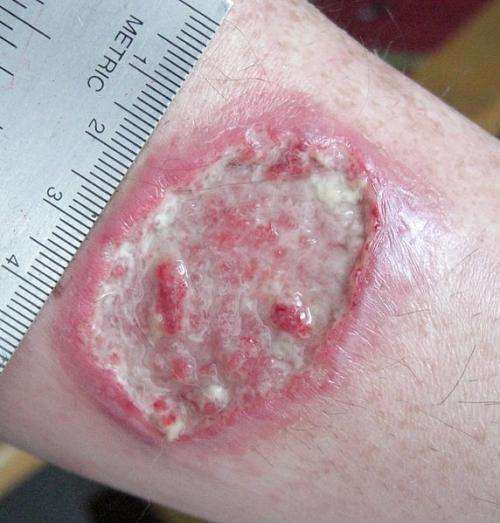October 29, 2013 report
Arsenic in India's water could cause resistance to visceral leishmaniasis treatment

(Medical Xpress)—Every year, visceral leishmaniasis infects about 500,000 people and kills about 41,000. Most deaths occur in India's Bihar region, where there is a high level of resistance to the antimony compounds used to treat this parasitic tropical disease. Alan Fairlamb and his colleagues at the University of Dundee have found that arsenic contamination of Bihar's water supply could be causing resistance to antimonial treatments. Their research appears in the Proceedings of the National Academy of Sciences.
The protozoa Leishmania donovani and Leishmania infantum cause visceral leishmaniasis by infecting the liver, spleen and bone marrow. Victims of the disease experience fever, anorexia, weight loss and inflammation of the liver and spleen. They will die without treatment. The only drugs that can kill the parasites that cause visceral leishmaniasis are antimonial preparations, amphotericin B, miltefosine, and paromomycin.
Doctors have been using antimonial drugs to treat visceral leishmaniasis successfully in sub-Saharan Africa and South America for almost 100 years. However, in Bihar, where most instances of the disease occur, cure rates using antimonial treatments had decreased to less than 50 percent by the end of the 20th century. Because of this, antimonial drugs are no longer the recommended treatment in India.
In the 1970s, engineers installed shallow tube wells in India to provide the population with clean drinking water. Subsequently, scientists discovered these wells exposed Biharis to arsenic by transferring naturally occurring arsenic in Bihar's groundwater to the domestic water supply. Fairlamb and his team thought arsenic in Bihar's domestic water supply could be causing resistance to antimonial treatments for visceral leishmaniasis. Arsenic and antimony share similar chemical properties, and Bihar is the only region in the world where arsenic contaminates the drinking water, visceral leishmaniasis is endemic and there is widespread resistance to antimonial medicines.
To test their hypothesis, the researchers exposed mice to water laced with arsenic until the proportion of arsenic in the tissues of the mice was similar to that found in arsenic-exposed humans. They then infected the mice with Leishmania donovani. After a month, they euthanized the mice, recovered the parasites and then infected another group of arsenic-exposed mice. They repeated this process until the parasites had infected five groups of mice. With each successive group of mice, the Leishmania donovani became less sensitive to the antimonial drug Pentostam. By the time they had infected the final group, the parasites had become completely resistant to the drug.
Fairlamb and his team say their research reveals an urgent need for alternative sources of domestic water in India.
More information: Chronic exposure to arsenic in drinking water can lead to resistance to antimonial drugs in a mouse model of visceral leishmaniasis, PNAS, Published online before print October 28, 2013, DOI: 10.1073/pnas.1311535110
Abstract
The Indian subcontinent is the only region where arsenic contamination of drinking water coexists with widespread resistance to antimonial drugs that are used to treat the parasitic disease visceral leishmaniasis. We have previously proposed that selection for parasite resistance within visceral leishmaniasis patients who have been exposed to trivalent arsenic results in cross-resistance to the related metalloid antimony, present in the pentavalent state as a complex in drugs such as sodium stibogluconate (Pentostam) and meglumine antimonate (Glucantime). To test this hypothesis, Leishmania donovani was serially passaged in mice exposed to arsenic in drinking water at environmentally relevant levels (10 or 100 ppm). Arsenic accumulation in organs and other tissues was proportional to the level of exposure and similar to that previously reported in human liver biopsies. After five monthly passages in mice exposed to arsenic, isolated parasites were found to be completely refractory to 500 μg⋅mL−1 Pentostam compared with the control passage group (38.5 μg⋅mL−1) cultured in vitro in mouse peritoneal macrophages. Reassessment of resistant parasites following further passage for 4 mo in mice without arsenic exposure showed that resistance was stable. Treatment of infected mice with Pentostam confirmed that resistance observed in vitro also occurred in vivo. We conclude that arsenic contamination may have played a significant role in the development of Leishmania antimonial resistance in Bihar because inadequate treatment with antimonial drugs is not exclusive to India, whereas widespread antimonial resistance is.
© 2013 Medical Xpress
















